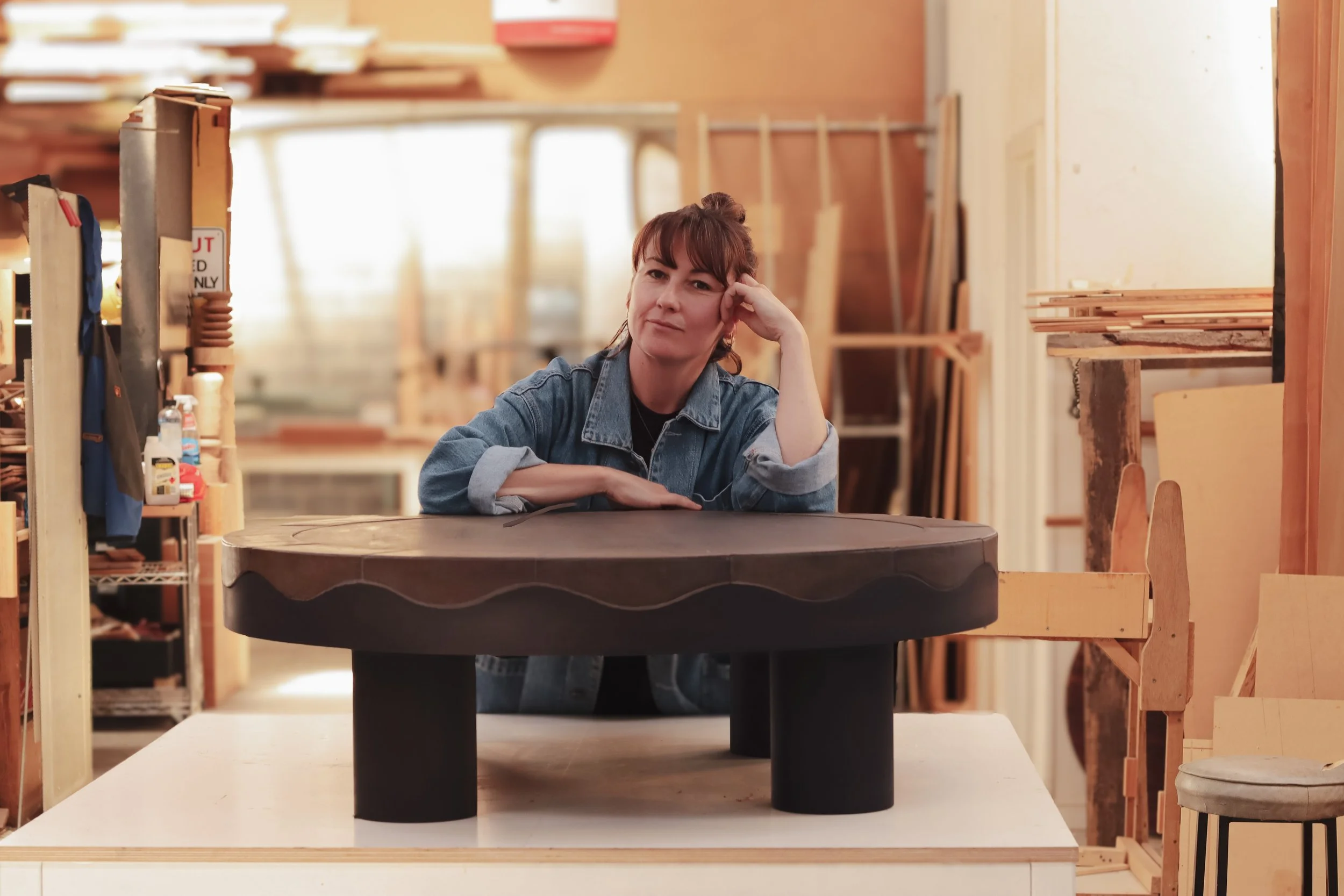Q&A: Kate Bowman
Harnessing natural materials from her surroundings, a Tasmanian ceramicist reimagines history, industry and the environment through beautiful objects.
▼
Kate Bowman (image supplied)
Where did you grow up, and how did you end up at the bottom of the world?
I grew up all over the place. Both of my parents were teachers, so we moved around a lot. Always being the new kid on the block made going through school a little tough, but looking back, I’m grateful for it. It taught me how to adapt, stay curious, and appreciate different ways of seeing the world.
As a ceramicist, I can take my practice anywhere, so when my husband Steve was offered a role in Nipaluna/Hobart, we couldn’t say no to the adventure. We’d been visiting for years, and had plenty of friends in the arts down here - many of whom came for a stint and never left. It just felt right.
What drew you to working with ceramics, and how do you describe your creative approach?
It started when I was 11 years old, tagging along to my mum’s pottery classes. But I took a detour into advertising before eventually making the leap into ceramics full-time. It was a slow shift over a few years, but I kept coming back to clayl.
After running a pottery school for years, I became acutely aware of the industry’s waste. Not just in what gets thrown out, but in how materials are sourced. Clay, minerals and oxides are often shipped across the world just to be processed, packaged, and shipped again. It made me question why we weren’t using what’s already around us.
My approach is pretty simple: I want my work to feel deeply connected to place. The textures, the materials, the process - they all tell a story. I lean into imperfection, letting the raw materials shape the outcome, rather than forcing them into something overly polished or predictable.
Rock Vessels, Kate Bowman (image: Dearna Bond)
Your beautiful custom tiles are handcrafted with natural materials and local resources. What is your process, and what kind of projects have you been working on?
For me, tiles sit at this great intersection of function and permanence. They build spaces, hold history, and get lived with in such an intimate way.
I make my own glazes using reclaimed materials - things like oyster shells, bottles and bones from local restaurants, as well as local rocks and offcuts from demolition sites and the odd skip bin I see while driving around. Every tile carries something of the landscape it came from. It’s a slow, labour-intensive process to crush, test and refine, but the results are worth it.
Recently, I designed a coffee table for an exhibition at Design Tasmania, with ceramic tiles that repurposed forgotten materials sourced in and around Hobart. I’m also collaborating with other furniture designers on commissioned pieces, and architects and interior designers on bespoke lights and tiles, which has been a really exciting way to push my practice further.
Talus Table and Igne Fleck Pendant, Kate Bowman (images: Dearna Bond)
What’s special about doing what you do here in Lutruwita/Tasmania?
Tassie forces you to slow down and pay attention. The landscape is wild, the materials are literally under your feet, and there’s a deep respect for craft here. Instead of ordering materials from across the world, I can go for a walk and collect what I need.
There’s also a really strong creative community. People here are experimenting, pushing boundaries, and genuinely invested in making things that matter. That kind of environment makes a huge difference.
What are three must-dos for every visitor to Tasmania?
First, hire a car, grab an oyster knife and a corkscrew, borrow some camping gear from a mate, and hit the road. It doesn’t really matter which direction you head in, Tassie is packed with wild places, incredible food, and plenty of unexpected magic along the way.
Second - Hobart’s Farm Gate Market is a must. It’s not just about the produce (which lives up to the hype), but the people. Everyone there is deeply passionate about what they do, and the seasonal, local offerings are next level!
Third - don’t stop at Mona. Tassie has a thriving creative scene, and there’s so much more to explore. Check out Contemporary Art Tasmania, Rosny Farm, Good Grief Studios, or Design Tasmania. And, if you’re in Hobart, swing by Designed Objects Tasmania for a visit and a cuppa - I’m always up for a chat!
Where are your favourite local haunts for eats and drinks?
The Crescent for a parma, Lucinda for date night, and Ogee to celebrate. All are within a hop and a skip from home - which is delicious and dangerous in equal parts!
Where are your favourite places to visit for a creative fix?
Most mornings, you’ll find me and our dog Umi in Knocklofty bushland. Hobart was built on sandstone from here, and it was home to the city’s brickworks for more than a century. Though the kilns fell silent in 1965, their mark is still everywhere - scattered shards of rocks, sandstone and bricks, all traces of an industry now reclaimed by the bush.
I collect a lot of my materials here, drawn to the way that nature and industry have intertwined over time. The textures, patterns, and the raw, weathered beauty are a constant reminder that the land holds stories, and that creativity is often just about paying attention to what’s already there.
Explore Kate’s work on her website or Instagram.




